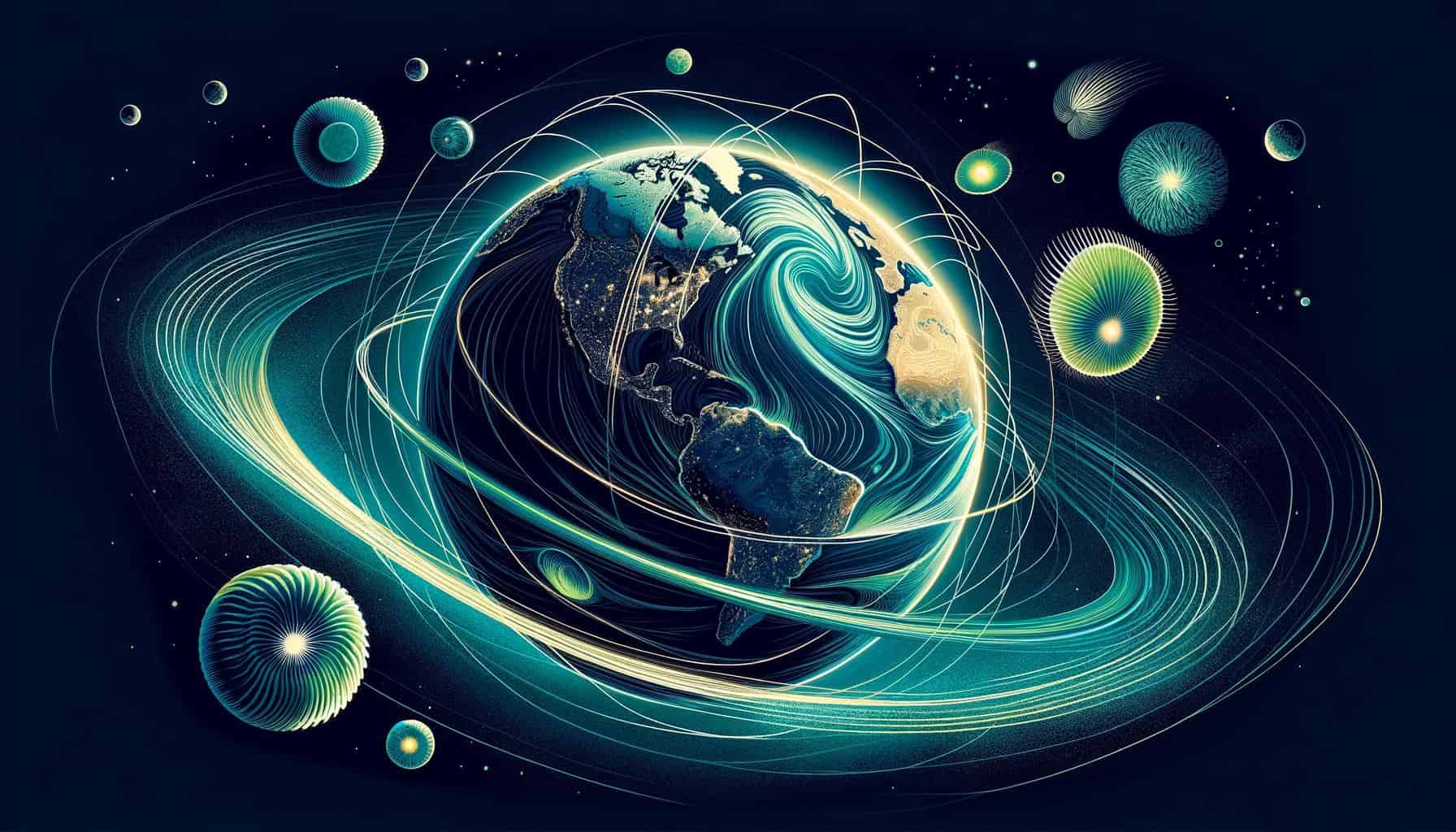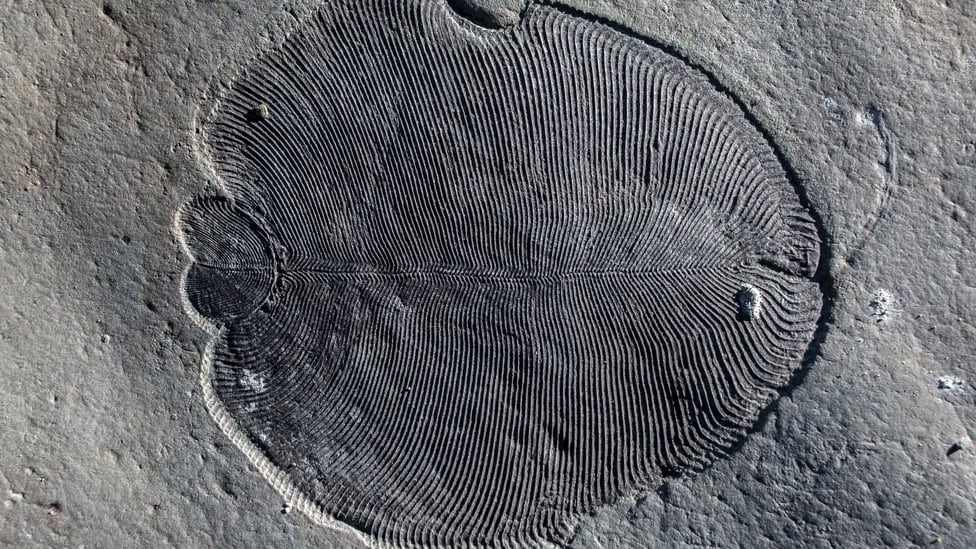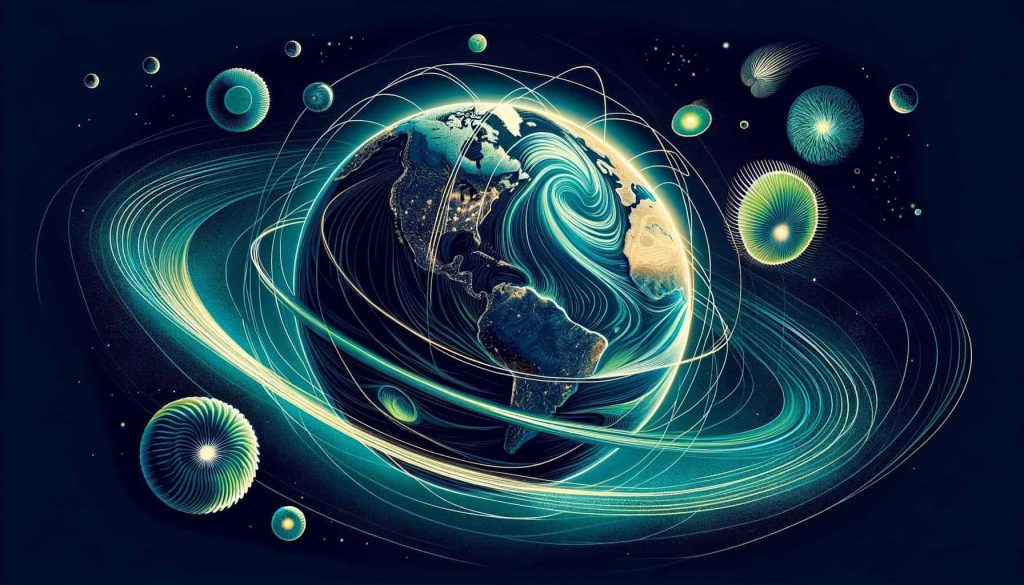
New research brings a surprising change to our understanding of planetary science. This new study suggests that a significant weakening of Earth’s magnetic field around 590 million years ago might have played a crucial role in the development of complex life forms.
Even though life on Earth started at least 4 billion years ago 4 billion years ago, before this anomaly in the magnetic field, life forms were tiny, basic, and mostly unchanging.
The 26-Million-Year Anomaly That Changed the Course of Life
The Earth’s magnetic field has flipped its direction multiple times over millions of years. But between 591 and 565 million years ago it went through a long period of weakening.
According to a new study published in Communications Earth & Environment, this extended weakening of the magnetic field might have helped bring about significant changes in Earth’s atmosphere. This, in turn, would have supported the evolution of more complex life forms.
The study’s discoveries are based on an analysis of plagioclase crystals from the Passo da Fabiana Gabbros in Brazil, which date back to the beginning of this critical period. Crystals keep old magnetic fields by capturing and locking in the orientation of magnetic minerals at their formation, allowing scientists to study the Earth’s magnetic history.
These crystals suggest that the geomagnetic field strength was at its lowest — only one-thirtieth of today’s levels and considerably weaker than any previously recorded. Such a drastic decrease in geomagnetic strength is thought to have lasted for at least 26 million years, covering one of the most crucial epochs in the history of life on Earth.
The Connection Between Magnetic Fields and Life
While the main purpose of Earth’s magnetic field has been to protect our planet from solar wind and cosmic radiation, thus safeguarding our atmosphere, the study suggests that its temporary weakening might have actually benefited our biosphere.
Although counter-intuitive, this idea makes sense. The reduced field could have led to an increased escape of hydrogen from the atmosphere. This process could reduce the amount of hydrogen available to bond with oxygen. And so, this might have led to higher oxygen levels in the atmosphere.
Oxygen is crucial for the development of complex life and the first truly mobile and complex creatures, known as the Ediacaran fauna, emerged shortly after this period of reduced magnetic field strength. These creatures represented a significant departure from the mostly microscopic and stationary life forms that had dominated the Earth previously.

Ediacaran fauna are remarkable. The disk-shaped Aspidella could be early ancestors of jellyfish. The leaf-like Charnia was an iconic frondose organism whose precise biological associations remain mysterious but might suggest a relation to algae or early animals. Another intriguing example is the half-billion-year-old Dickinsonia, a creature that was oval and had ridges and grew by adding parts.
Continuing examination of life
The potential increase in oxygen resulting from this decrease in magnetism is still a topic of intense research and discussion. Theoretical models differ significantly, predicting a rise in hydrogen loss ranging from 30% to a remarkable 1,000%.
The research also discusses other indirect impacts of a less powerful magnetic field. For instance, higher levels of nitrogen oxides due to increased solar radiation. This might have caused the formation of ozone holes, similar to those caused by human-made chlorofluorocarbons (CFCs), further changing Earth’s atmospheric chemistry.
Although the direct reason for the weakening of Earth's magnetic field during this time is uncertain, the potential repercussions of such an occurrence offer intriguing insights into the intricate relationship between geomagnetic fields and life. This study not only enhances our understanding of Earth’s geological and biological past but could also assist in the search for life on other planets.









